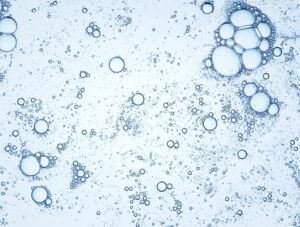
Identifying and quantifying drugs and their metabolites in biological matrices like blood and urine is complex but crucial – with important consequences for criminal cases, roadside drug tests, clinical treatment, and workplace testing programmes. In this article, we assess the benefits and drawbacks of using three increasingly common matrix materials – saliva, hair, and sweat – plus the difficulties laboratories face in testing for New Psychoactive Substances (NPS). We also examine current forensic and toxicology regulations and best practice – and how using quality matrix material reference standards and proficiency testing (PT) can help forensic and toxicology laboratories to get their results right.
Introduction
In toxicological analysis, identifying and quantifying drugs and their associated metabolites within biological matrices is common practice. Knowing which drugs and toxins are present in these samples, and in which concentrations, has many important applications: including helping healthcare workers to decide on the correct clinical treatments, in supporting safe and effective Therapeutic Drug Monitoring (TDM), and also in workplaces that test employees for being under the influence of drugs. Meanwhile, in criminal cases, examination of biological specimens not only helps identify specific toxins or drugs present, but can also establish a timeline of exposure or ingestion - yielding information that helps to reconstruct events leading to a crime, identify potential suspects, and provide evidence to support prosecutions.
The most common biological samples used in drug toxicology have traditionally been blood and urine - but a number of so-called “emerging matrices” are now being used more often to collect and analyse evidence, including saliva, hair, and sweat. These three matrices in particular offer advantages over blood and urine both during collection and analysis, as we will outline below. Despite these exciting developments, however, obtaining reliable results from biological samples remains a notably complex process - since these matrices often contain complex mixtures of proteins and other small molecules that can interfere with drug identification and quantification. When we also consider that such analytical evidence is often used in settings where lives, livelihoods and reputations are on the line, it becomes even more vital for laboratories to have confidence in the accuracy of their results. We therefore consider how they can produce reliable and robust data by adhering to key global regulations and guidelines – as well using tools such as quality reference materials and proficiency testing (PT) as part of their quality control (QC) processes.
Traditional and emerging matrices
As de Campos et. al state, drug testing in forensic toxicology “has been historically and traditionally performed in whole blood, plasma, serum and urine specimens, which are considered conventional...biological fluids.” The website simplyforensics.com adds that “As the primary circulatory system of the human body, blood serves as a repository for a wide range of substances, including drugs, toxins, and metabolites.” Meanwhile, “As a waste product, urine can provide valuable insights into the presence and metabolism of various substances within the body.” In recent years, however, there has been an increase in the use of alternative biological matrices – not least because they often represent an easier and less invasive way of collecting samples, but also because they can be used as backups to traditional matrices, and may offer their own analytical advantages.
Advantages and disadvantages of newer matrices
Saliva (oral fluid)

The strong potential of the saliva/oral fluid matrix as an alternative to blood and urine has been demonstrated by the sharp recent increase in saliva testing for DUID (Driving Under the Influence of Drugs) at the roadside, and in workplace drug tests. Among the many advantages of a saliva sample is that it is readily available, easily and non-invasively collected at the scene, and can also be used for preliminary screening. The use of a specialised collection device, allowing the person tested to spit into a sterile container, means that a trained health professional is not required to be present. It also permits the test to take place in full view of the person collecting the sample – greatly reducing the potential for adulteration. Saliva testing is, moreover, superior to a breathalyser test “because it provides simultaneous identification of alcohol and other psychoactive drugs, and also allows the sample to be stored and reanalysed if there is a judicial request.” Aside from alcohol, common drugs of abuse that a saliva test can detect include amphetamines, barbiturates, benzodiazepines, cocaine, marijuana/THC, methamphetamine, opioids, and PCP. Although the detection window for saliva tests is relatively short - usually between five and 48 hours – it can be longer if frequent or long-term drug users are being tested.
In the laboratory, the saliva/oral fluid matrix has advantages because it “is simpler, presenting less interference as compared to blood and urine”, and allowing drug analysis to be performed more accurately. However, interpretation of drug samples in a saliva matrix can also present difficulties – notably when samples are affected by factors such as an individual’s smoking habits, diet, health status, age, gender and circadian rhythm. The small volumes of saliva available for testing also mean that analytes may be present in very low amounts, and thus require sensitive detection methods and careful sample preparation. Finally, care must be taken when choosing a saliva sampling device, which represents a significant variable in terms of method standardisation and comparing results from different laboratories.
Hair
According to Kintz et al., “Hair analysis is a reliable and widely used tool to evaluate drug exposure in many fields, including workplace testing, drug abuse history and withdrawal control, post-mortem toxicology, doping control, therapeutic drug monitoring of pharmaceuticals and even environmental exposure to toxic agents.” While most drugs only remain in urine for a few days, “many drugs can be detected in hair samples months or years after use, thereby enabling a long detection window.” As simplyforensics.com states, the longevity of hair samples means that they “act as chronological records...., making them particularly useful in cases involving long-term substance abuse or chronic exposure.” According to one US study of recreational drug users, hair testing is particularly effective in detecting recent use of cocaine and oxycodone. Like saliva, moreover, hair samples are easy, painless, and non-invasive to collect, as well as difficult to adulterate.
As with any biological matrix, however, hair also presents the analyst with its own particular drawbacks and difficulties. For example, although a hair matrix is superior to urine for analysis of long-term drug exposure, Palamar et al. argue that the opposite is true when it comes to past month drug use. Khajuria et al. meanwhile state that “the major challenge in hair analysis lies in the interpretation of results, which may be affected by external contamination and thus lead to false-positives.” Amongst the complicating factors that make hair analysis more difficult are the hair’s melanin content, cosmetic and heat treatments, exposure to sunlight, and washing procedures before analysis. There is, consequently, a need for “more sensitive and selective analysis methods to be developed in order to minimise (these) factors (and which) would certainly provide a new dimension to hair analysis and its applications.”
Sweat
Like saliva, sweat analysis has important applications for both forensic and clinical toxicology, and has been used successfully to verify drug intake by people subject to parole or probation programmes, in monitoring recovering drug addicts, and evaluating exposure to substances in the workplace. The convenience of collection represents another significant advantage for this particular matrix, as sweat collection is non-invasive and can be performed simply and safely by wiping the skin with gauze, cotton, filter paper, and plastic materials - or by using specialised sweat patches that can stay on the skin for up to two weeks. Analytical advantages of using sweat as a drug testing matrix include the fact that sweat samples present less complex composition, while they can occasionally provide a wider detection window for substance identification than blood (in some cases, xenobiotics can still be detected in sweat up to 14 days after exposure). According to de Campos et al., sweat is an effective matrix for the detection of cocaine, heroin, codeine, amphetamines and some cannabinoids, although "sweat analysis is not the most sensitive approach to investigate THC exposure.”
Other limitations of sweat as a matrix for drug analysis identified by the de Campos group include “the rather low concentration of analytes,” which necessitates the use of sensitive analytical techniques, as well as “a lack of information regarding the possibility of environmental contamination and reabsorption of substances by skin.” Finally, the volume of sweat samples can vary due to both internal and external factors (such as inter- and intra-variability in sweat production, and external circumstances including room temperature and physical activity).
LGC Standards – helping you master matrix materials
To support the analysis of drugs of abuse, prescription drugs and ethanol in common forensic and clinical toxicology matrices, LGC Standards has developed a complete offering of 470+ reference standards for matrix materials such as hair, saliva, plasma, urine, serum and blood.
While extensive, our matrix materials offer is also just part of our comprehensive catalogue of more than 17,500 forensic and toxicology products from our Logical, TRC and Lipomed ranges, as well as other leading producers around the world. The wide-ranging nature of our portfolio means that we can also supply you with more difficult to source products – such as matrix material standards, general reference materials and SILs for buprenorphine and prazepam.
In addition, we offer the most extensive and up-to-date range of NPS reference materials - many produced under the rigorous quality assurance standards set out in ISO Guide 34. And, of course, we’ve got your proficiency testing requirements covered – with LGC AXIO Proficiency Testing offering PT schemes for drugs of abuse in blood, serum, urine, hair, and saliva.
|
Testing for New Psychoactive Substances
Described in the media as “the latest drug crisis” to hit the world, New Psychoactive Substances (NPS) are a diverse and potentially lethal group of synthetic or naturally occurring substances that mimic the effects of traditional illicit drugs. Better known NPS include cathinones, fentanyls, synthetic cannabinoids, and benzodiazepine-like materials, while nitazenes are currently causing widespread concern after being linked to a growing number of overdose deaths. NPS like nitazenes are particularly dangerous because – in addition to their potency – they are often found hidden in other street drugs, such as ecstasy, Xanax, oxycodone, and heroin, and therefore taken unknowingly by users who have little or no tolerance for them. As Graham Biggar, the director general of Britain’s National Crime Agency, said earlier this year: "With nitazenes you can absolutely die the very first time you take it."
An early US study into unintentional NPS use found that – of 80 hair samples collected voluntarily from nightclub-goers in New York, 57 tested positive for at least one drug, and 26 of those featured at least one NPS (predominantly butylone but also methylone, methoxetamine, 5/6-APB, α-PVP and 4-FA). Perhaps significantly, it also classed 24 of the 26 samples containing NPS as traditional drugs that were adulterated with butylone and other “new” compounds. In testing terms, one of the main problems with NPS is that most are rapidly eliminated from the body – which limits the effectiveness of urine, blood, and saliva testing. However, the hair (keratin) matrix can reveal parent NPS consumed over extended time periods and - when coupled with advances in ultra-high performance liquid chromatography–tandem mass spectrometry (UHPLC–MS-MS) - hair analysis “allows researchers to obtain significant information about past use, even a single intake, of any targeted NPS."
Regulation, guidelines, and ISO accreditation
As simplyforensics.com notes, forensics laboratories engaged in analysis of biological matrices “must obtain accreditation from recognized organizations and adhere to established standards and guidelines” to ensure the quality and reliability of their procedures and results. As well as following well-defined and documented Standard Operating Procedures, laboratories need to implement comprehensive quality control measures – including the use of appropriate controls, such as calibrators and reference materials from “competent providers” (i.e., those with ISO 17025 or ISO 17034 accreditation). Under the terms of ISO 15189, laboratories must also use QC materials “that react to the examining system in a manner as close as possible to patient samples.” Regular participation in PT schemes is also regarded as essential under current regulations – both in ensuring the accuracy and reproducibility of analytical techniques, and in helping analysts stay up-to-date with the latest methodologies and best practice.



